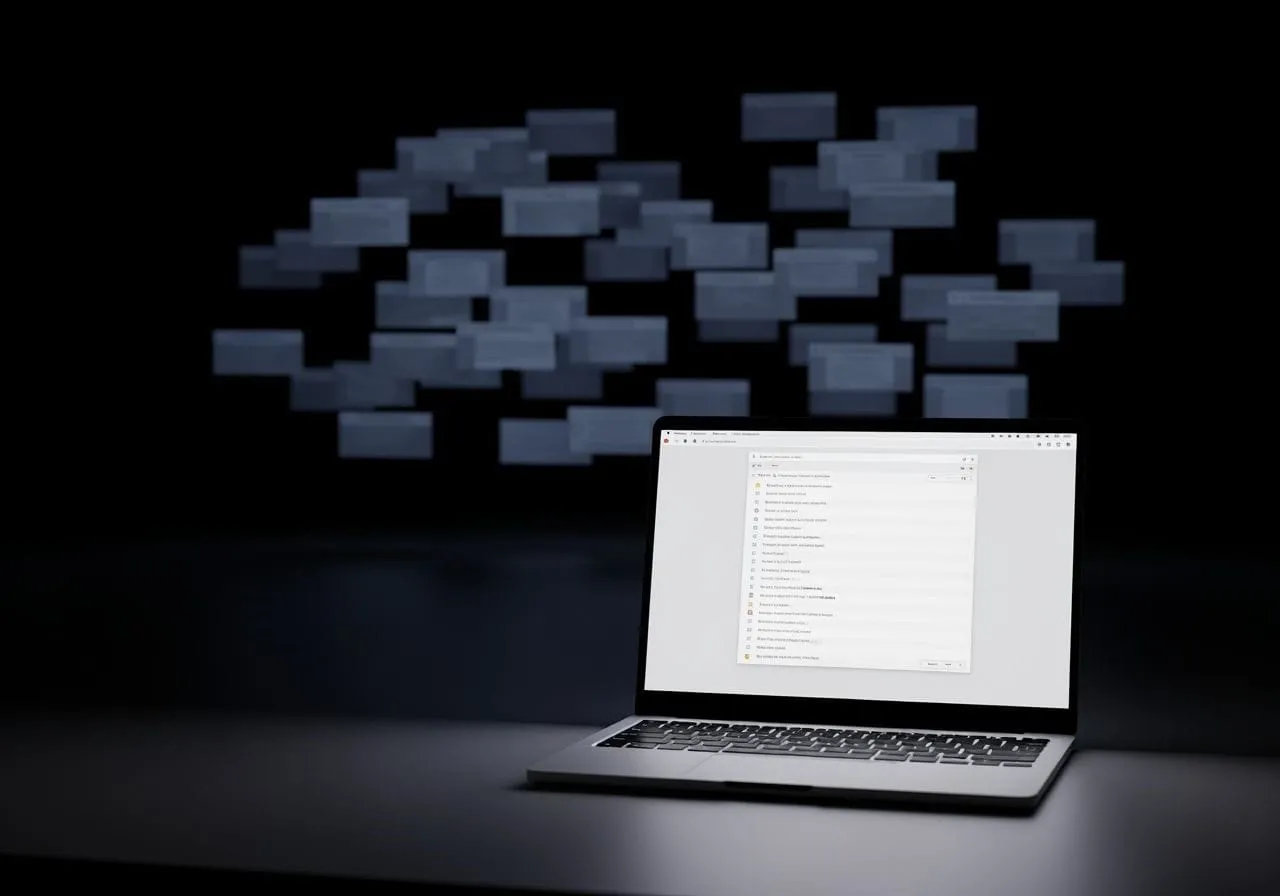The browser is a slot machine. You pull the lever, it spits out 20 tabs, and suddenly you’re “researching” oatmeal recipes while trying to fix a plugin bug from 2017. We call it productivity because we don’t want to call it what it is: compulsive clicking with a search bar.
So try this: fire your browser for one day. Ask a model instead. No Googling, no “open in new tab,” no doom-surfing. Just a question, a straight answer, and your own brain deciding if it passes the sniff test.
- Browser Detox: Try asking an LLM instead of Googling for a day. It cuts out the endless tabs and random distractions.
- Speed vs. Accuracy: The model is fast, but you need to verify. It’s great for quick drafts and simple tasks, but not for high-stakes stuff.
- Less Noise, More Action: Focus on what matters. The model helps you get to the point faster, leaving you more time to actually do the work.
The Benefits: Less Noise, More Action
First, the noise drops. The model won’t lure you into “10 Best X for 2025” content farms or turn a simple question into a weekend project. Ask how to batch-rename files on Windows, it gives you the command and a plain-English version. Ask for an email that says “no” without sounding like a jerk, it writes one that won’t get you HR’ed. You move. You ship. You don’t accidentally adopt a new note-taking religion because some Medium author promised you a second brain.
The Cracks: Accuracy and Speed, But with Limits
Then the cracks show. Time-sensitive facts wobble. Prices drift. Anything with legal, medical, or financial consequences becomes a red light. The model is brilliant at pattern-shaped answers and terrible at things that changed last Tuesday. If you ask it for today’s airline baggage fees, it will either hedge or hallucinate. Either way, you shouldn’t trust it. That’s not a failure of AI; that’s a failure of the question. You asked a parrot for the weather.
But the surprising thing is how often “good enough” is more than enough. Not for surgery. Not for tax filings. For the evil 80% of work that’s just glue: drafts, summaries, “explain this like I already kind of get it but I’m tired,” “turn this mess into steps,” “translate this from corporate to human.” The model collapses friction. That saves your head for the part only you can do—taste, judgment, the decision that risks your name.
The Hallucination Fear: Keep It Real
The fear, of course, is hallucinations. Everyone’s favorite word to sound informed. Here’s the blunt version: the model will occasionally say something that looks smart and is absolutely made up. The countermeasure isn’t a PhD in prompt whispering. It’s three questions you can ask in plain language: How sure are you? What would prove you wrong? If I had to double-check, where would I look? If the answer to those comes back as bluster, you’re done. If it points you to a vendor doc, a standard, or something specific enough to find in one search, you’re probably fine.
The Upgrade: Speed Without Sacrifice
What I liked most about a Tab Zero day wasn’t the speed. It was the discipline. Without the browser, I stopped treating research like a mood. I asked tighter questions. I defined the finish line before I started. “I need a three-sentence explanation of rate limiting that a bored manager won’t misinterpret.” The model gave me three sentences. Did I verify the phrasing against one doc later? Sure. Did I need ten tabs to get there? Absolutely not.
Breaking the Habit: The Internet is a Comfort Blanket
There were faceplants. A routine command for macOS that worked on Intel but not on Apple Silicon. A confident claim about a plugin that turned out to be two versions old. This is where the cliché advice actually lands: if it involves speed, stakes, or soul, be careful. Speed means the answer changes often. Stakes means someone bleeds if you’re wrong. Soul means your reputation, your taste, your name. When two of those are high, don’t offload judgment. Use the model as a drafting assistant, not an oracle.
The cultural part is the real itch. We’ve spent a decade training ourselves to believe “due diligence” equals “a graveyard of tabs.” It feels professional to have 19 sources open even if you read three and skimmed the rest. Tab Zero exposes that theater. You realize your browser is a comfort blanket. The model rips it off and makes you say what you actually needed in the first place. That’s the upgrade—less ritual, more intent.
Conclusion: A New Approach to Productivity
Will an LLM replace your browser entirely? No. Should it replace the first 20 minutes of almost everything you do? Probably. Start with the shape of the thing you want: an outline, a first draft, a step list, a one-paragraph brief, a translation from engineer to executive. Let the model cough up the scaffolding. Then go be the adult in the room and check what matters. You’ll finish faster, and you won’t drown in content shaped like answers but built for ad slots.
Try it tomorrow. Kill the browser for a day. Ask the model first. If something smells off, take one verification pass and move on. If it’s risky, treat it like a loaded tool and keep your hands on the safety. By dinner, you’ll know exactly which parts of your job are actually thinking and which parts were just tab management.
And if you fall off the wagon at 2 p.m. and open a dozen links about the “Top 9 Productivity Apps You’re Ignoring,” that’s fine. Consider it field research in how the internet sells you back your own attention.



